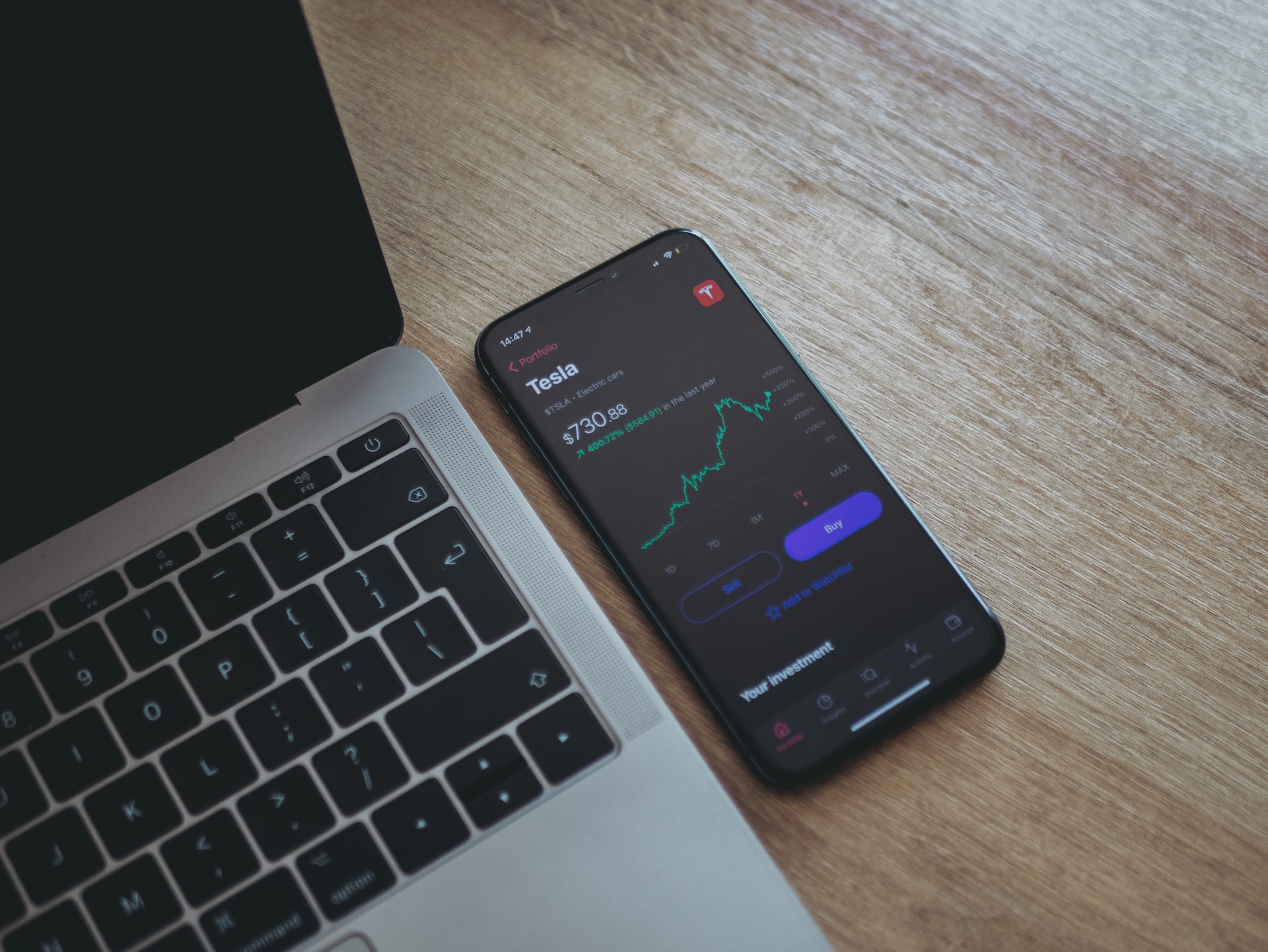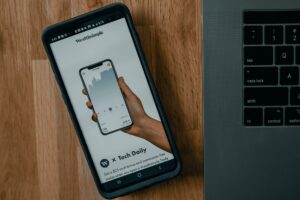Marina
11.07.2023
Categories

7 Steps to Build a Personal Finance App + 7 Key Features

Marina
11.07.2023
The significance of personal finance apps has soared exponentially as individuals seek practical solutions that facilitate efficient money management and informed decision-making. By harnessing the power of these applications, users gain access to an extensive collection of sophisticated tools, consequently empowering them to accomplish desirable long-term financial objectives.
Some popular examples of personal finance apps today include Mint, Acorns, and PocketGuard.
Now, let’s discuss the essential steps to build your personal finance app with key features to include.

To create a successful app, you must consider various aspects — from identifying your target audience to incorporating essential features. This guide will outline seven steps to help you build a functional personal finance application.
To commence the development of a personal finance application, it is crucial to identify the intended audience. Here are a few methods you can use to understand your target user base:
For example, let’s say your app focuses on budgeting for young professionals. In that case, you can target individuals in their 20s and 30s who are starting their careers and have specific financial goals, such as saving for a down payment on a house or paying off student loans.
Setting clear project goals plays a crucial role in determining the success of your personal finance app. For that:
By carefully defining your project goals, you set a clear direction for your personal finance app.
The design should prioritize ease of use, logical navigation, and clear interfaces, allowing users to access and understand their financial information easily. Here are some considerations for designing an effective UI/UX:
Crafting the fundamental features that serve as the app’s building blocks is imperative to develop your personal finance app. Consider the following basic features:
The launch stage is exciting for any app developer. Before sharing your creation with the wider public, you will first go through careful preparation and thorough examination. This is where beta testing starts — enlisting a certain number of individuals as testers for your app. Their input proves invaluable in surveying potential flaws or areas where user experience could be enhanced further.
Identifying these aspects during beta testing enables you to address them promptly so that you launch a well-constructed final product worthy of public acclaim.
You can proceed with confidence to launch your MVP. It’s the bare-bones version of your app with the most essential features that you’ll launch to the public to start getting feedback and generating users.
Collecting user feedback is a crucial stage in developing your personal finance app. The feedback you receive from your initial users provides valuable insights:
To collect user feedback effectively, consider implementing in-app feedback mechanisms — ratings, reviews, and feedback forms. Actively engage with users to encourage them to share their thoughts and suggestions. Regularly analyze and prioritize user feedback to guide your app’s future updates and improvements.
Maintaining and updating your app is crucial to ensure the product is stable and bug-free. After all, nobody wants to use an app that repeatedly crashes or encounters technical difficulties.
Ensure that your app remains in line with the latest trends and technologies. Users are constantly looking for the newest and most advanced solutions. Besides, regular updates can greatly enhance user experience by introducing new features or fixing bugs.

When designing a personal finance app, you must include crucial features that give users an extensive and secure experience when handling their finances. Integrating these features enhances the apps’ usability, and the utmost importance is given to maintaining privacy and security for users’ financial data.
User registration and authentication form the very bedrock of your application, for they empower users to establish accounts and securely log in. The login procedure must remain straightforward but secured enough to safeguard user data.
The dashboard is a critical feature of any financial app. It should be easy to use and customizable.
Here are some of the key functionalities that a financial app dashboard should include:
An indispensable feature of any financial application lies in its ability to effectively track one’s budgetary allocations. It should empower users to:
Expense tracking allows users to enter and classify their expenses for better financial management. Users can input details such as the date, amount, category, and expense description. This manual entry method ensures users can accurately record their transactions.
You can also integrate your app with users’ bank accounts or credit cards to simplify the expense-tracking process. It allows for the automatic import of transactions. Ensure the integration is secure and reliable, prioritizing the protection of users’ sensitive financial data.
Additionally, consider implementing an auto-categorization feature. The app can automatically assign categories to imported transactions based on patterns and keywords by leveraging intelligent algorithms. However, it is important to allow users to review and modify auto-categorized expenses as needed.
You can offer a receipt capture feature to enhance the expense tracking experience further. Users can take photos of paper receipts or upload e-receipts received via email, storing them within the app. This helps them record their expenses and provides additional documentation for future reference.
As users track their expenses, the app can generate visual representations and analysis of their spending patterns. Charts, graphs, and reports can illustrate monthly breakdowns, category-wise expenditures, and other insights. This analysis empowers users to identify high-spending areas and make informed financial decisions.
Users can easily locate specific transactions based on date, amount, category, or description by offering expense search and filtering functionalities. Implementing data synchronization across devices ensures users can access their expense records seamlessly, regardless of their device.
Incorporating bill reminders into your personal finance app is crucial to ensure timely bill payments and avoid penalties or fines. Here’s how you can effectively implement it:
Integrate your app with payment gateways or provide direct payment options. This allows users to conveniently make bill payments directly from the app.
Consider incorporating smart features such as automatic bill payment scheduling. This feature can enable users to set up recurring payments for bills that have fixed amounts and due dates.
Goal setting allows individuals to establish and track objectives related to their finances effortlessly. This way, they can monitor progress towards desired outcomes such as saving for vacations or purchasing property.
Customization serves as a foundational pillar within this feature’s effectiveness. Users should have complete control over which financial objectives they wish to prioritize for monitoring purposes, and how they prefer relevant information displayed. This aspect allows users the flexibility to tailor goal-setting capabilities according to individualized specifications.
Incorporate a reporting system that generates detailed reports summarizing users’ financial data. These reports must cover various aspects, including income, expenses, savings, investments, and debt. The information should be presented clearly and concisely to enable users to interpret and analyze their financial situation easily.
Visual representations help users grasp information quickly and identify trends, patterns, and areas that require attention. For example, use pie charts to illustrate expense breakdown by category or line graphs to depict income trends over time.
Offer insights and analysis alongside the reports and visualizations to provide users with valuable information. For example, highlight areas where users have exceeded their budget or suggest optimizing spending. This accessibility lets them stay updated on their financial health anytime and anywhere.
Developing a comprehensive personal finance app with crucial features requires you to navigate the complexities of careful planning and precise execution. Luckily, you can partner with experienced professionals like RoveTek who can significantly streamline the development process.
RoveTek’s expertise in personal finance app development, our commitment to user-centric design, and our focus on security and privacy make us an ideal partner in creating a personal finance app. Collaborate with RoveTek to tap into our extensive expertise and wealth of experience in developing your personalized personal finance app.